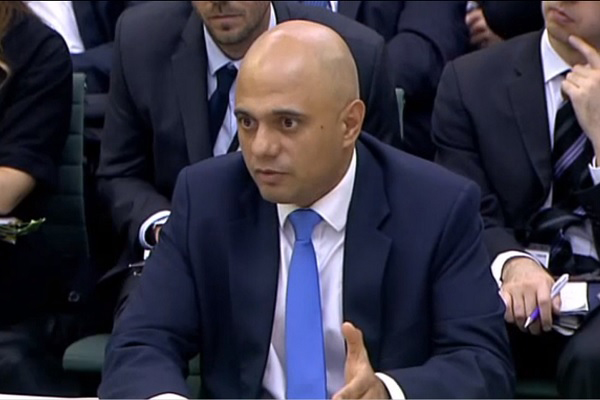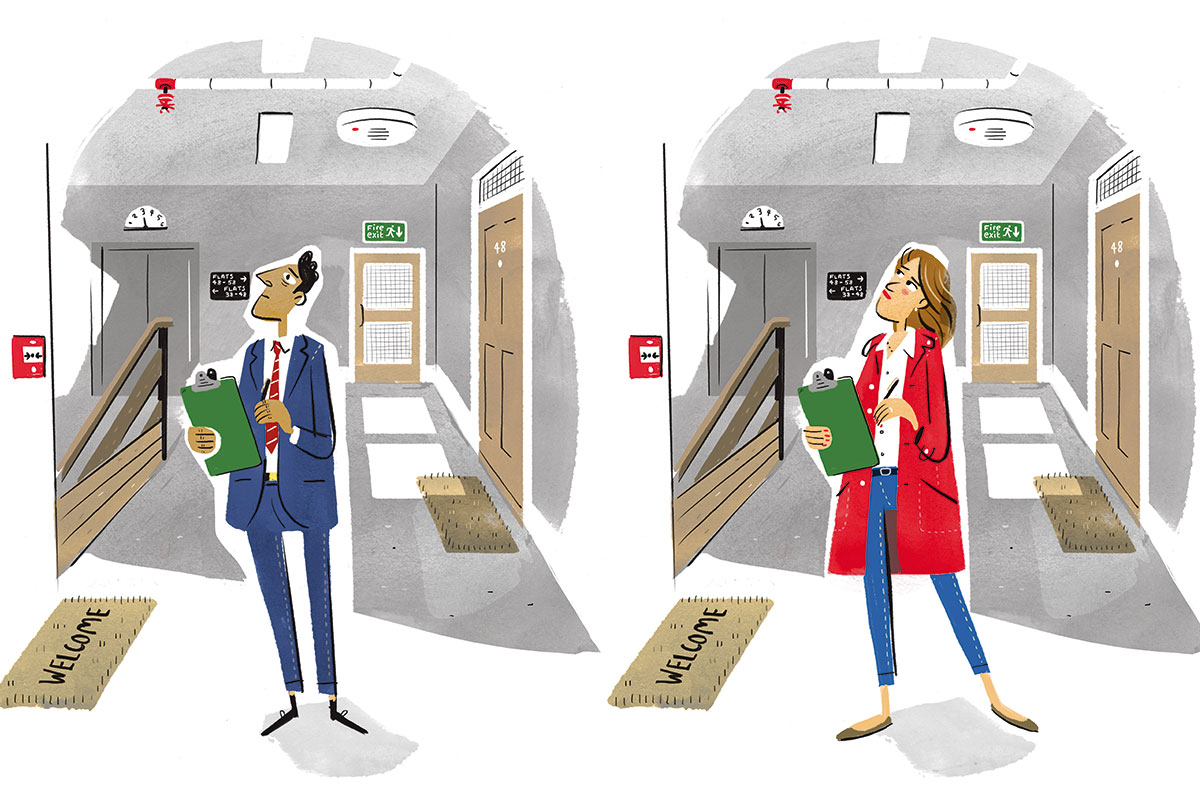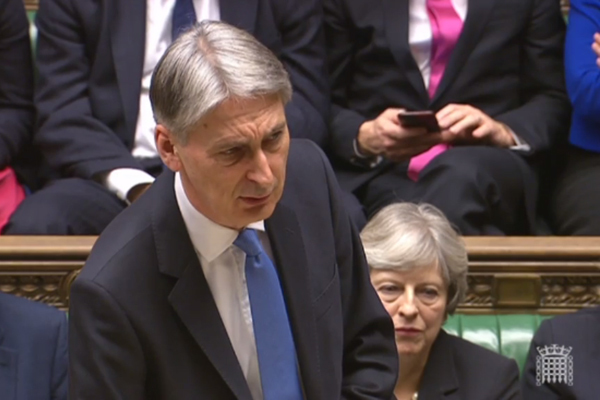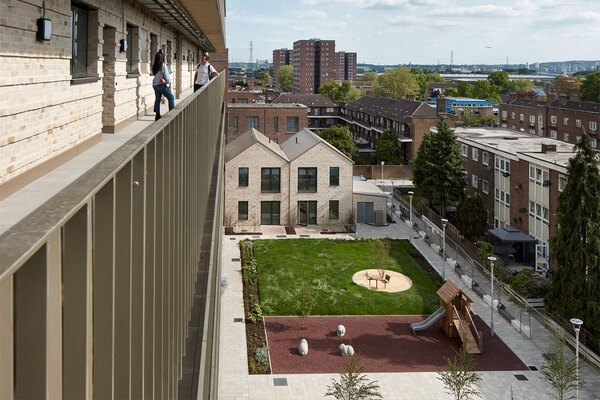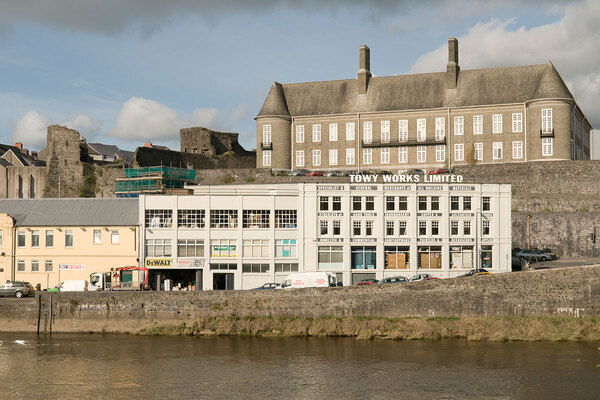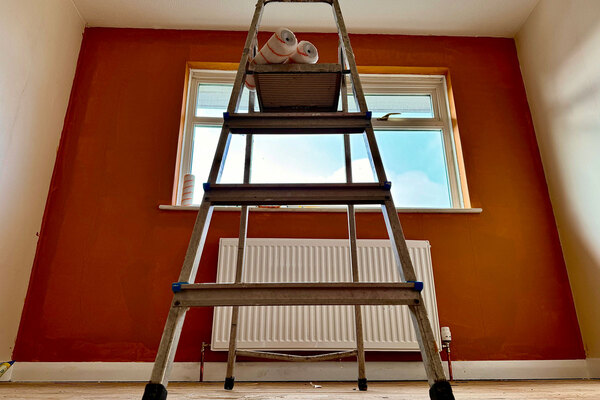You are viewing 1 of your 1 free articles
A closer look at the Housing Infrastructure Fund
As the government releases a shortlist of funding allocations, Luke Barratt scrutinises the £5bn fund. Illustration: Serge Seidlitz
Remember November 2016? It was Philip Hammond’s first Budget and the sector was somewhat dewy-eyed about the new chancellor’s fresh approach to housing, which involved – radically – a bit of cash.
A central plank of Mr Hammond’s new approach to the economy was a £23bn National Productivity Investment Fund, a tenth of which was put into a £2.3bn Housing Infrastructure Fund (HIF).
Unlike most funding the construction sector had got used to in recent years, this would come in the form of an actual cash injection of grant funding, not loans or guarantees.
It was the biggest government investment programme in more than a decade, and a year later the chancellor more than doubled the housing portion, increasing the pot of money in the HIF (insiders pronounce this “hiff”) to £5bn.
The amount dwarfed funds announced at the same time that were earmarked for affordable housing, from the £400m for estate regeneration to the £125m increase in Targeted Affordability Funding.
And yet not a single penny of the £5bn, which local authorities bid for, will be spent directly on bricks and mortar to build new homes. Instead, the money will go to all sorts of things – from roads to rails to schools – that will enable new homes to be built.
The government has recently announced the shortlist of local authorities that could receive funding from the largest £4.1bn portion, and so Inside Housing is taking a closer look at what the fund is for and how local authorities have tried to cut themselves a slice of the pie.
What kinds of projects are being funded?
The £5bn pot is split into two sections, which the government call ‘marginal viability’ and ‘forward funding’.
Most of the money is in the latter section, with only £0.9bn allocated for marginal viability. Bids for this money, which were allocated in February, are also capped at £10m, as the government’s aim is for local authorities to use it for “the final, or missing, piece of infrastructure funding to get additional sites... unblocked quickly”.
The government says it is open-minded when it comes to what kinds of infrastructure it will fund, giving examples as diverse as transport, schools and internet connections.
Debbie Hope, strategic manager for housing growth at Stoke-on-Trent City Council, explains what her local authority will do with the £10m of marginal viability funding it will receive from the government.
“We’ve got an area in the city that’s got several stalled sites,” she explains. “What we said was, we’ll use that £10m as a revolving fund. We’ll invest it in the sites to get them kick-started and then have some kind of memorandum of understanding with the individuals while we’re working things through.
Money already allocated for the £0.9bn for ’marginal viability’
| Local authority | Project | HIF Funding | |
| Adur | Free Wharf - Western Harbour Arm (Shoreham-By-Sea) | £10m | |
| Aylesbury Vale | Aylesbury Link Road & Junction Improvements to deliver major housing growth at Aylesbury Garden Town (AGT) | £9.5m | |
| Barnet | Finchley Central Station | £9.8m | |
| Barnsley | Seasons Phase 3, Thurnscoe Housing Development | £2.2m | |
| Basildon | Basildon Town Centre - East Square Regeneration | £9.7m | |
| Basingstoke and Deane | Manydown | £10.3m | |
| Bath and North East Somerset | Bath Riverside | £12.5m | |
| Bolton | Rivington Chase | £12m | |
| Boston | Quadrant Q1 Boston | £3.5m | |
| Breckland | Thetford Northern Sustainable Urban Extension (TNSUE) | £9.9m | |
| Brent | Northwick Park | £9.9m | |
| Brent | Peel Development Site - South Kilburn Regeneration Programme | £9.9m | |
| Brighton and Hove | King Alfred Development | £15.2m | |
| Bristol | Unlocking Lockleaze Development | £6.6m | |
| Bristol | Glencoyne Square Access (Arnside and Glencoyne Square Regeneration) | £3m | |
| Camden | Abbey | £10m | |
| Central Bedfordshire | Dunstable Town Centre Regeneration | £6.3m | |
| Chelmsford | Chelmer Waterside | £5.7m | |
| Cheltenham | Portland Street, Cheltenham | £3m | |
| Cherwell | Howes Lane Tunnel. Part of North West Bicester Strategic Realignment of Howes Lane | £6.7m | |
| Cheshire East | North West Crewe Growth and Infrastructure Package | £10m | |
| Cheshire East | South Macclesfield Development Area | £10m | |
| Cheshire West and Chester | Rossfield Park, Ellesmere Port | £3m | |
| Colchester | Northern Gateway | £5.5m | |
| Corby | A43/Steel Road Roundabout | £3.9m | |
| Cornwall | Hayle Harbour North Quay Redevelopment - Phase II Access Spine Road | £5.6m | |
| Cornwall | West Carclaze Garden Village | £2.3m | |
| County Durham | Newton Aycliffe Housing Growth | £6.8m | |
| Coventry | Eastern Green Unlocking Development | £12.7m | |
| Crawley | Telford Place | £2m | |
| Crawley | Forge Wood | £4.4m | |
| Croydon | Whitgift Shopping Centre And Surrounding Land Croydon CR0 1LP - S278 transport works | £10m | |
| Darlington | West Park Garden Village | £2.7m | |
| Derby | Castleward Urban Village | £3.1m | |
| Dover | Dover Bus Rapid Transit System (BRT) | £15.8m | |
| Ealing | Grand Union Avenue Phase 3 | £1m | |
| East Cambridgeshire | Soham Eastern Gateway | £6.3m | |
| East Devon | Axminster North-South Relief Road (ANSRR) | £10m | |
| East Dorset | West of New Road Link Road, West Parley | £2.2m | |
| Eastbourne | Bedfordwell Road | £1.2m | |
| Eastleigh | West of Horton Heath Strategic Development Proposal | £9.3m | |
| Eastleigh | Construction of a bypass for Botley, providing a connection from Station Hill (A334/A3051 junction) to Woodhouse Lane together with associated improvements/enabling works to Woodhouse Lane | £10m | |
| Exeter | Greater Exeter Suitable Alternative Natural Green Space | £3.7m | |
| Fareham | Welborne Garden Village | £9.9m | |
| Fylde | M55 Heyhouses Link Road | £3.8m | |
| Guildford | Ash Road Bridge, to unlock housing near Ash and Tongham | £10m | |
| Hackney | Woodberry Down | £9.9m | |
| Harrow | Grange Farm | £10m | |
| Hastings | Combe Valley Sports Village | £2.2m | |
| High Peak | Hogshaw and Granby Road sites, Buxton | £2m | |
| Ipswich | Ipswich Garden Suburb (IGS) | £9.8m | |
| Kettering | Desborough North Marginal Viability Bid | £3.6m | |
| Lambeth | 8 Albert Embankment, London SE1 7SP | £10m | |
| Lambeth | Somerleyton Road, Brixton | £10m | |
| Leeds | Land East of Otley | £6.3m | |
| Leeds | Roundhay Road / Leopold Street: ChaCo & Unity Development | £0.9m | |
| Leicester | Ashton Green, Leicester /td> | £10m | |
| Lewes | North Street Quarter, Lewes | £10m | |
| Lewisham | South Circular Road - Catford Town Centre | £10m | |
| Lewisham | Lewisham Gateway | £10m | |
| Lincoln | Spa Road development | £2.8m | |
| Maldon | Heybridge Flood Alleviation and Regeneration Scheme | £7.3 | |
| Manchester | Moss Side Integrated Healthcare Centre, Bowes Street, Moss Side | £3.3m | |
| Manchester | New Victoria, Corporation Street, Manchester | £10m | |
| Mid Devon | Cullompton and Culm Garden Village M5 Motorway Junction 28 improvements | £10m | |
| Mid Devon | Tiverton Eastern Urban Extension access – phase 2 new A361 junction | £8.2m | |
| Mid Sussex | Northern Arc, Western Gateway | £6.5m | |
| Newcastle upon Tyne | Ouseburn - Ouseburn Mouth (OM) | £1.2m | |
| Newcastle upon Tyne | Outer West Infrastructure | £9.6m | |
| Newcastle upon Tyne | Science Central Residential Sector – Infrastructure/ Public Realm | £5m | |
| North Devon | Westacott, Barnstaple, North Devon | £2m | |
| North Devon | Ilfracombe Southern Extension, North Devon | £6.5m | |
| North Dorset | Gillingham Strategic Site Allocation | £4m | |
| North Kesteven | Sleaford West Quadrant | £2m | |
| North Somerset | Provision of utilities to land at Parklands Village | £0.9m | |
| North Tyneside | Killingworth Moor Key Strategic Site | £8.9m | |
| Northumberland | St Georges Hospital Link Road | £4.4m | |
| Norwich | Anglia Square | £12.2m | |
| Oldham | Broadway Green Phase 2 | £4.9m | |
| Oxford | Blackbird Leys District Centre Regeneration Scheme | £3.7m | |
| Oxford | Northern Gateway (also referred to as Oxford North) | £10m | |
| Oxford | Osney Mead Innovation Quarter (OMIQ) | £6m | |
| Peterborough | Yaxley Loop Road | £4.5m | |
| Plymouth | North Prospect Regeneration Phase 4 | £2.8m | |
| Poole | Poole Town Centre Regeneration - Phase II (Town Centre North) | £6m | |
| Reading | Dee Park Regeneration - phase 3 | £6m | |
| Reading | Central Pool | £1.3m | |
| Rother | Blackfriars, Battle | £3.2m | |
| Rushcliffe | South of Clifton Housing Infrastructure | £9.9m | |
| Rushmoor | Aldershot Town Centre | £8.4m | |
| Salford | Plot E7/E8, Chapel Street, Salford | £1.1m | |
| Sedgemoor | East of Bridgwater Allocation | £5.5m | |
| Selby | Olympia Park, Selby | £8.8 | |
| Sheffield | Manor Cluster | £3.5m | |
| Shropshire | Western Shropshire Interchange Improvements - Unlocking the Marches Gateway for Housing & Employment Growth | £9.3m | |
| South Bucks | Beaconsfield Relief Road | £4.4m | |
| South Holland | Northern Spalding Sustainable Urban Extension (SUE) and Section 5 of the Spalding Western Relief Road (SWRR) | £12m | |
| South Norfolk | Land south of the A11, Cringleford | £5.5m | |
| South Somerset | Brimsmore Key Site, Thorne Lane, Yeovil, Somerset /td> | £1.9m | |
| Southampton | Townhill Park Regeneration | £3.7m | |
| Southend-on-Sea | Better Queensway (BQ) | £15m | |
| Stockport | Weir Mill | £5.6m | |
| Stockport | Stockport Interchange - Residential | £2.6m | |
| Stockport | Hopes Carr - Hempshaw Brook | £0.3m | |
| Stockton-on-Tees | West Stockton Strategic Urban Extension - Elton Interchange Improvements | £10m | |
| Stoke-on-Trent | Burslem Town Centre | £10m | |
| Stratford-on-Avon | Long Marston Airfield Garden Village (LMAGV) - Phase 1 | £13.4m | |
| Swale | Queenborough & Rushenden Regeneration | £3.5m | |
| Swindon | New Eastern Villages - Rowborough Eastern Access | £5m | |
| Swindon | Kingsdown Bridge | £6.5m | |
| Tameside | Godley Green Garden Village | £10m | |
| Taunton Deane | Staplegrove Spine Road | £7.2m | |
| Teignbridge | Dawlish Link, Bridge and Cycleway | £4.2m | |
| Tewkesbury | Tewkesbury Ashchurch Housing Zone - Access to the North | £8.1m | |
| Thanet | Manston/Haine Roundabout | £2.5m | |
| Thurrock | Claudian Way, Chadwell St Mary | £0.5m | |
| Trafford | Trafford Waters | £4.0m | |
| Trafford | Future Carrington - Phase 1 | £8.4m | |
| Trafford | Partington Canalside | £6.7m | |
| Vale of White Horse | Wantage Eastern Link Road (WELR) | £7.7m | |
| Wakefield | Infrastructure for Growth at City Fields, Wakefield | £1.5m | |
| Warrington | Centre Park Link | £3.6m | |
| Warwick | Kenilworth Education & Growth | £9.5m | |
| West Berkshire | Sterling Cables Development, Newbury | £1.5m | |
| West Dorset | Chickerell Urban Extension | £1.5m | |
| West Lindsey | Gainsborough Southern Urban Extension | £2.1m | |
| Weymouth and Portland | Ocean Views, Portland | £2.8m | |
| Wiltshire | Ashton Park Urban Extension | £8.7m | |
| Wirral | Northbank, Wirral Waters | £6m | |
| Woking | Sheerwater Regeneration | £9.3m | |
| Wycombe | Princes Risborough Expansion Area | £12m | |
| Wycombe | Realignment of Abbey Barn Lane and junction reconfiguration | £7.5m | |
| Wyre Forest | Churchfields Urban Village - Highway Infrastructure | £2.7m |
“We can get to a point where we’ve got some kind of legal agreement that once the houses are built and the money starts to come back in, then they can start to share some of that success with us in terms of finance, and what we get back we’ll continue to invest in other regeneration projects.”
The much larger, £4.1bn forward funding pot, is intended for bigger projects and is aimed at highest tier authorities, with the government willing to provide “a significant proportion of the upfront development costs” to create confidence and attract more investment later.
These could include major new highways networks, bridges or electricity capacity, to name a few.
Paul Smith, cabinet member for housing at Bristol City Council, admits: “A lot of its not very sexy. It’s things like putting in new bus lanes, building new roads, either into sites or connecting sites to the city.
“A significant amount of the HIF bid that we’ve got in at the moment – the big one – is around making a contribution to remodelling the main railway station in Bristol so that it serves the area to the east of it, where most of the development would be. At the moment, it faces mainly west.”
Bristol has reached an interim deal with the government as part of the West of England Combined Authority. The bid described by Mr Smith was for £250m, but for now they’ll have to make do with £3m to do more work for the next stage.
How does the bidding work?
Before it will part with any of this money, the government wants bidding authorities to demonstrate ’market failure’. This means that the scheme, though it would benefit society, could not happen without the support of the fund.
Judith Atkinson, strategic director for housing at Local Partnerships, a joint venture owned by the Treasury and Local Government Association to advise councils, has worked advising authorities on their bids.
She says that one of the main challenges in putting together a bid is demonstrating the link between an infrastructure project and the homes it could unlock.
She explains: “If you find that the infrastructure delivery expertise is held in a different directorate to the people responsible for increasing the number of housing units each year in that area, sometimes it can need a new unified delivery team to be brought into place so there’s a single project team dealing with these things rather than in separate bits of the council.
The shortlist of local authorities that could receive part of the main £4.1bn pot of HIF funding
| Local authority | Region |
| Bedford | East of England |
| Brighton and Hove | South East |
| Buckinghamshire | South East |
| Cambridgeshire and Peterborough | East of England |
| Central Bedfordshire | East of England |
| Cheshire East | North West |
| Cornwall | South West |
| Cumbria | North West |
| Devon | South West |
| East Sussex | South East |
| Essex | East of England |
| Gloucestershire | South West |
| Greater London Authority | London |
| Greater Manchester Combined Authority | North West |
| Hampshire/td> | South East |
| Herefordshire | West Midlands |
| Hertfordshire | East of England |
| Kent | South East |
| Lancashire | North West |
| Leicestershire | East Midlands |
| Lincolnshire | East Midlands |
| Medway | South East |
| Milton Keynes | South East |
| Norfolk | East of England |
| North East Combined Authority | North East |
| North Somerset | South West |
| Northamptonshire | East Midlands |
| Nottinghamshire | East Midlands |
| Oxfordshire | South East |
| Rutland | East Midlands |
| Sheffield City Region | Yorkshire and The Humber |
| Somerset | South West |
| Suffolk | East of England |
| Surrey | South East |
| Swindon | South West |
| Thurrock | East of England |
| Warrington | North West |
| Warwickshire | West Midlands |
| West Midlands Combined Authority | West Midlands |
| West of England | South West |
| West Yorkshire Combined Authority | Yorkshire and The Humber |
| Wiltshire | South West |
| Windsor and Maidenhead | South East |
| Wokingham | South East |
| York | Yorkshire and The Humber |
“Regarding this as a single, unified endeavour rather than two separate programmes is a particularly important aspect.”
There have been some complaints about the bidding process from a regional perspective. The government makes a calculation when comparing bids to judge which ones will deliver greater value for money.
In crude terms, this involves seeking the highest financial return for the lowest investment – but this has a bias towards areas where homes are sold at higher prices.
Last month, Greater Manchester mayor Andy Burnham, West Midlands mayor Andy Street, Liverpool City Region mayor Steve Rotheram and Tees Valley mayor Ben Houchen, sent a joint letter to Theresa May criticising this formula for prioritising London and the South East above other areas.
Stoke City Council, for example, bid for £65m to build a road from the suburban part of the city to the centre called the east-west connectivity bid. Its plan was to make former mining areas and industrial sites more easily accessible and unlock 5,000 homes.
This bid was rejected, and Ms Hope suggests that the government’s formula was part of the reason.
Nevertheless, she is diplomatic, telling Inside Housing: “You’ve got to find some way of allocating a limited amount of funds. Whichever one they choose will mean that someone is not going to receive the money, so there’s always going to be some criticism.
“Obviously I’m very disappointed that we didn’t get the money, but I’m glad we got the £10m.”
A government source also insists: “We are committed to building the homes this country needs, where they are needed.
“It is important that this fund is available to local authorities in all parts of the country with good housing sites which need unlocking or ambitious plans for infrastructure led housing growth. We received a large number of competitive projects from across the country and are keen to progress these.”
What does the government want in return?
Of course, all this money doesn’t come without a few strings attached.
The government has shortlisted four bids from the Greater Manchester Combined Authority for chunks of the forward funding section of the HIF as part of its housing deal.
These will see money put into Manchester’s northern and eastern gateways, investment to unlock housing in Salford City Centre, new roads connecting Bolton and Wigan and new bus lanes for south-east Manchester.
“The government looks as if it’s prioritising those areas that look to be getting on with joint strategic planning in some form", James Stevens, Home Builders Federation
As part of the deal, Andy Burnham has committed to increase his housing target above the level suggested by the government in its recent assessment of local housing need. The idea is that the extra funding should enable the delivery of housing over and above those that the authority should – in the government’s view – be able to deliver anyway.
James Stevens, director for cities at the Home Builders Federation, explains: “The government looks as if it’s prioritising those areas that look to be getting on with joint strategic planning in some form. They’re really looking at combined authorities.
“[The government is supporting Andy Burnham’s] promise to the electorate that he would prioritise brownfield development. But in return for that, the government wants to see more homes delivered in the next 10 years than would have otherwise been the case.”
These conditions have got other authorities – who have yet to sign deals – wondering what conditions may appear when deals are actually on the table.
It may not quite be the end of austerity, but for many local authorities desperate to up housing development it’s a welcome change.


